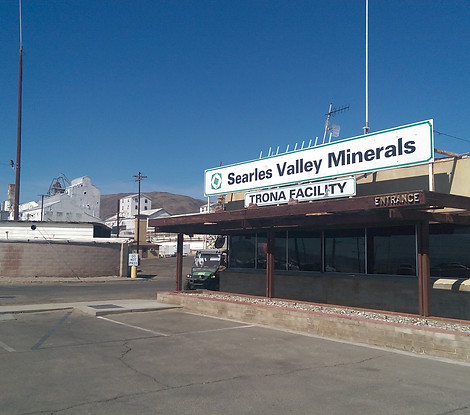
SUCCESS STORY: SEARLES VALLEY MINERALS
PROJECT BACKGROUND
Borax Plant, Death Valley
-
Brine extraction operation to produce Borax
-
Solution comprised of over 300,000 TDS (less than 2/3 water)
-
Scale formulation caused hour-long system shutdown twice a day
-
Four heat exchangers exposed to extreme mineral fouling
-
Two-mile long, 24" transmission also required weekly flushing
RESULTS
Scale successfully controlled
-
System flushes extended from twice a day to once a week
-
Existing scale removed from transmission line and eliminated the need for future backwashes
-
Eliminated plant downtime and increase operation efficiencies
-
Improved heat transfer rates, reduced labor and chemical use
-
ROI positive within three months
-
Searles Valley committed to implementing Flow-Tech throughout its operation including pumps, transmission lines and miles of distribution piping
Client Testimonial
David Hakim, Operations Engineer
"Searles Valley Minerals (SVM) has four plate and frame heat exchangers installed in a parallel configuration designed to inject 130°F brine into salt formations spanning a ten square mile area in Trona, CA. This installation requires each heat exchanger to be flushed for one hour twice a day with 180°F process liquor to remove the mineral deposits within the plates. SVM, in collaboration with Flow Tech Systems (FTS), initiated a six-month test process to determine the viability of the Flow-Tech technology in reducing scaling.
SVM installed two FTS transmitters spaced seven feet apart on the circulation fluid pipeline, which operates at 90°F, providing the greatest potential for scaling. The initial FTS estimate of effective operational area included the two nearest heat exchangers with respect to the FTS transmitter installation and limited effect on the two furthest heat exchangers. The result of the first month of testing verified the FTS initial estimate with the two nearest heat exchangers transitioning to a once a week flush cycle, and the two furthest heat exchangers remaining on the previous described flushing regime.
The six-month testing process concluded in January 2013, providing a three-month payback and reducing the flush cycle for the two nearest heat exchangers to once a week. SVM (installed in January 2013) a second FTS system on the other side of heat exchanger skid closer to the furthest heat exchangers described previously. The FTS performance mirrored the existing FTS system with a 15% improvement in temperature rise across the heat exchangers driven by their design and age.
These four heat exchangers function as mission critical components to the overall warm solution mining process for SVM. SVM recommends FTS as a viable solution to address scaling in plate and frame heat exchangers while also extending their operational life."



